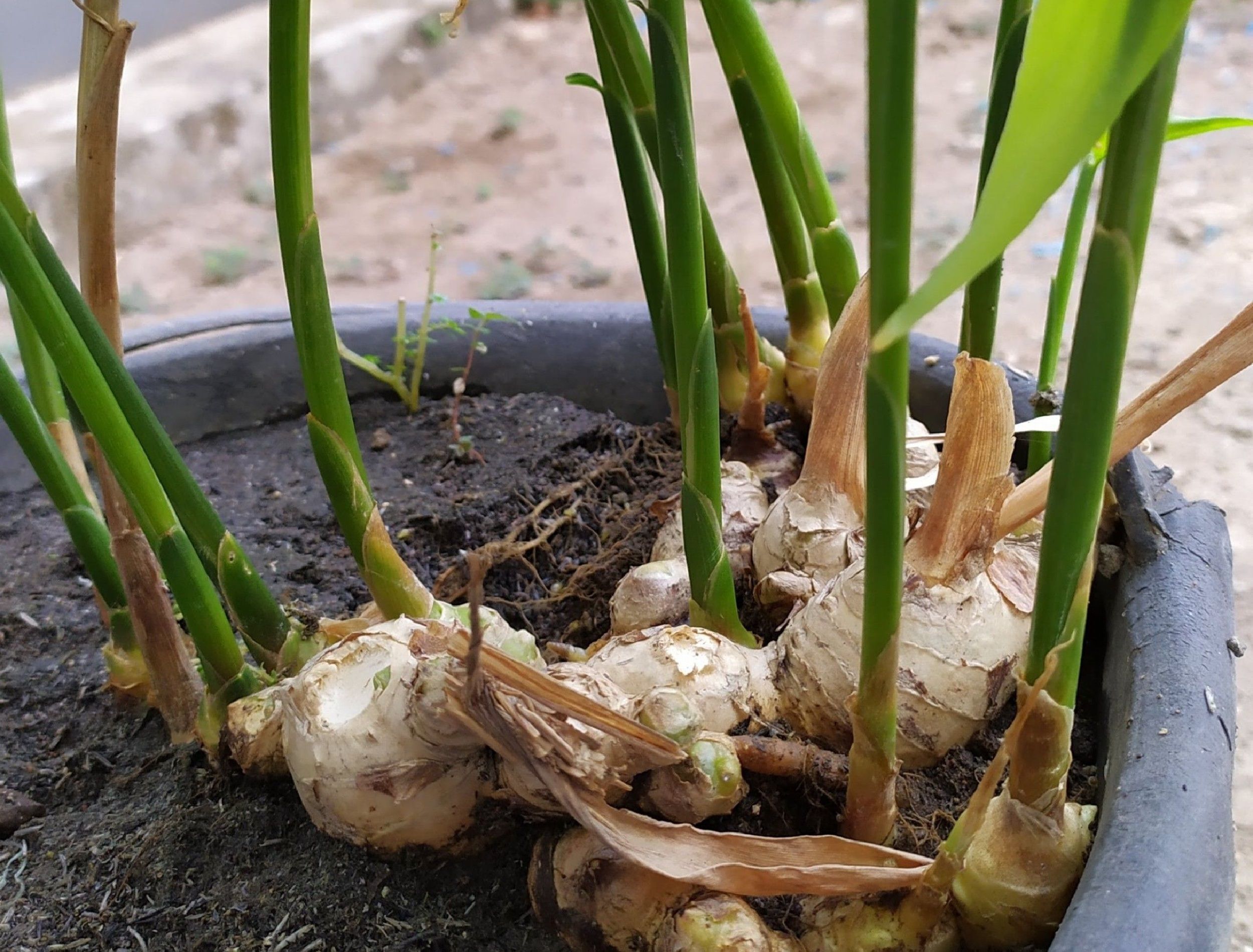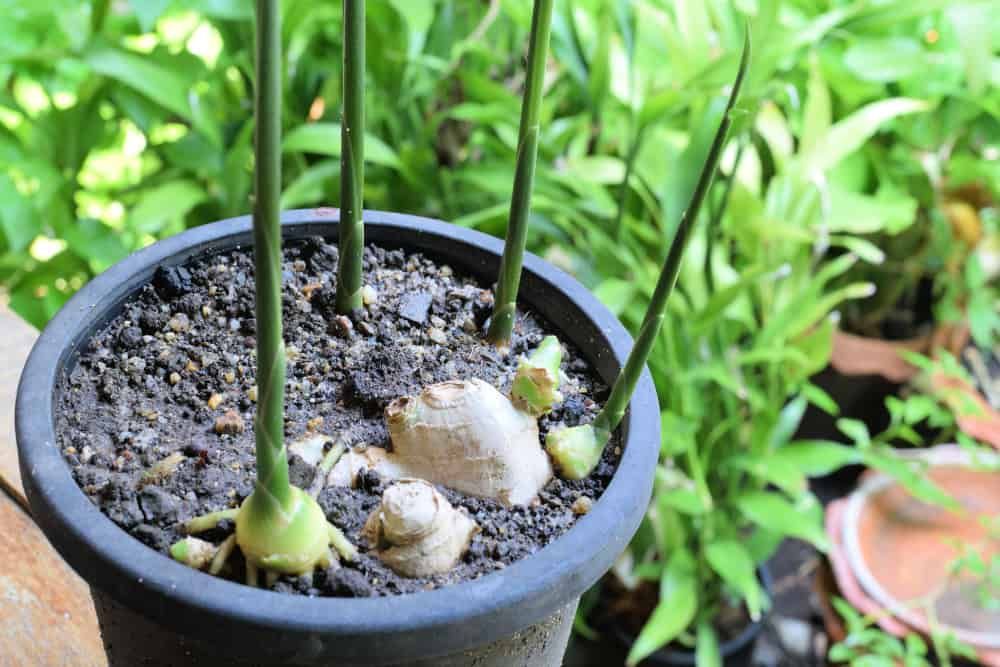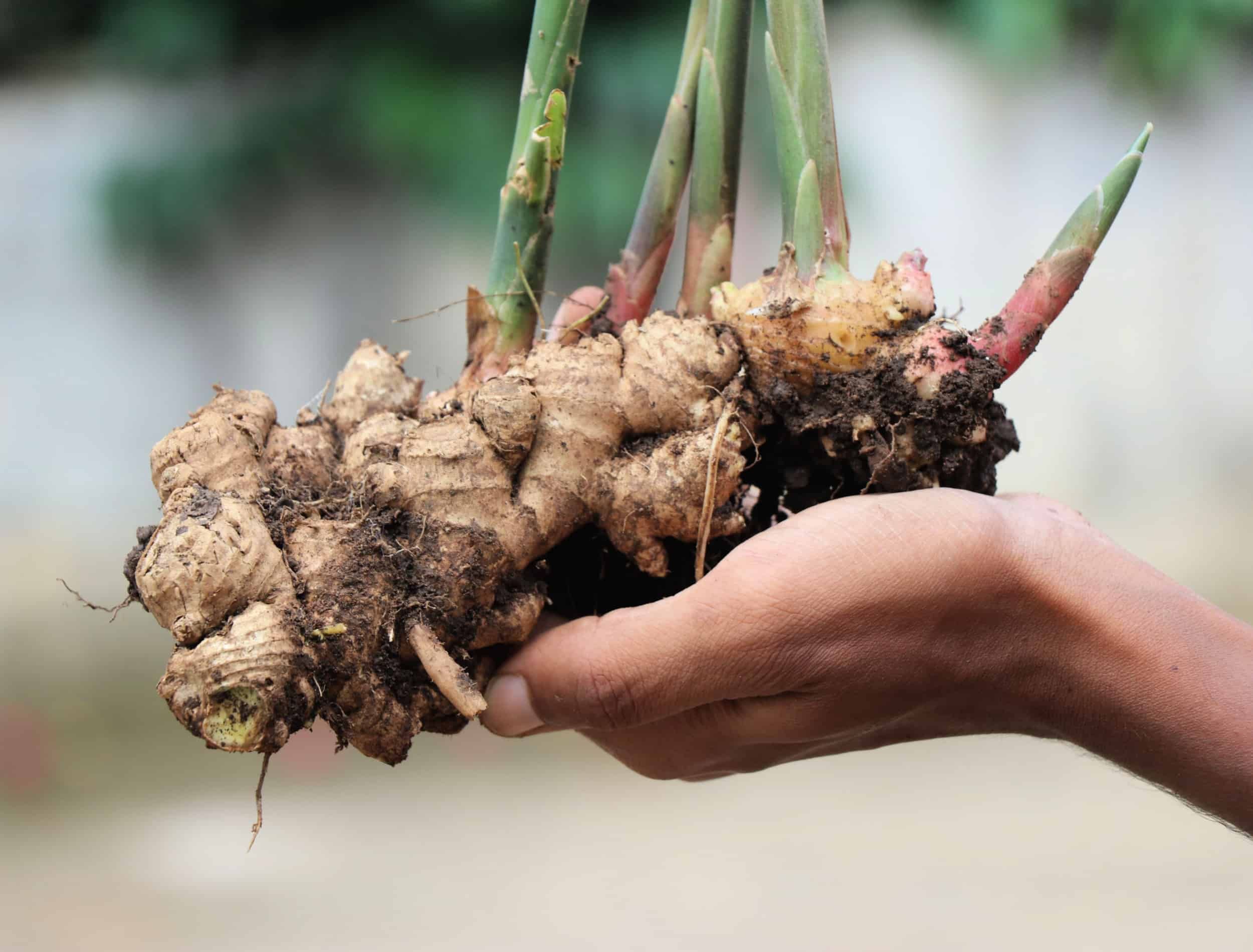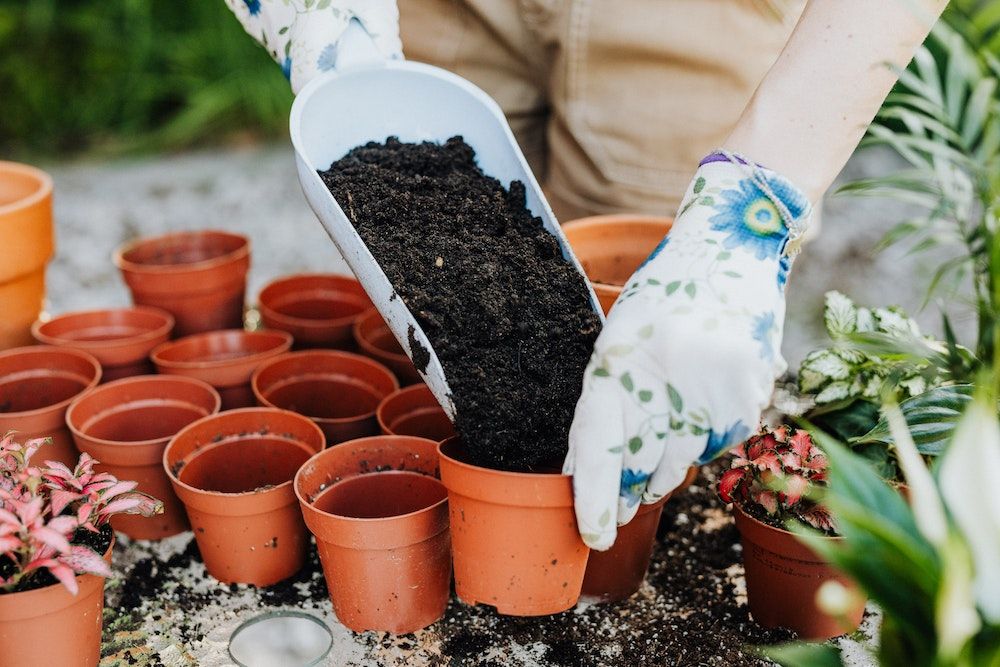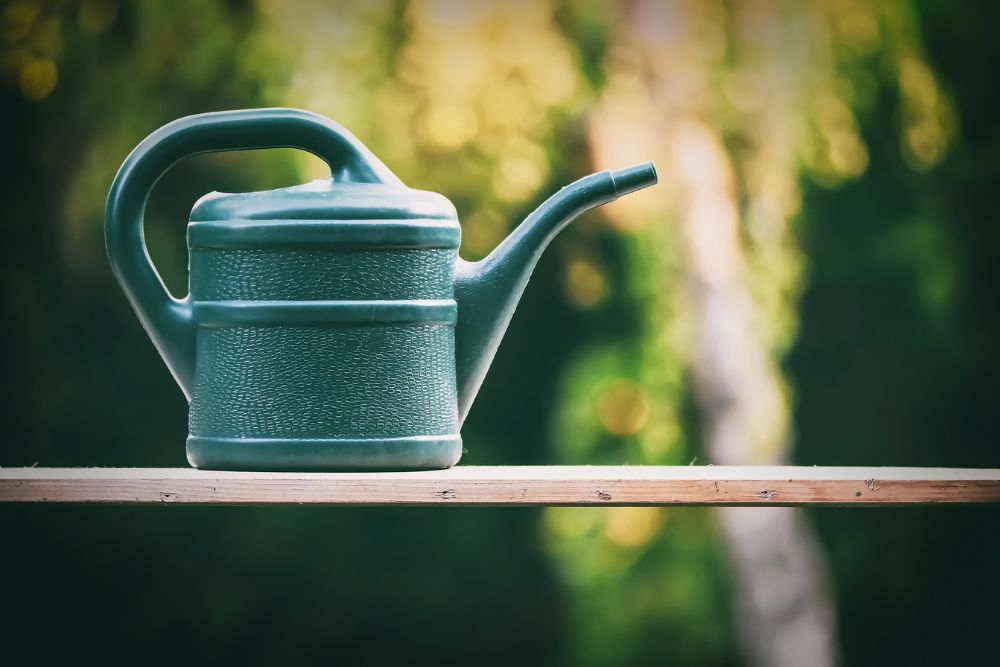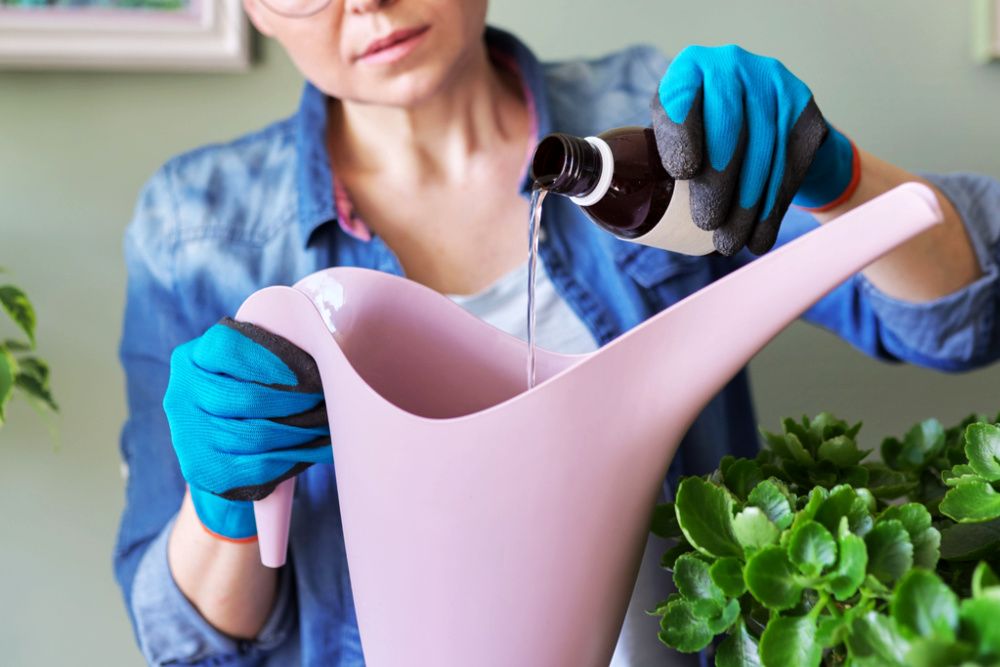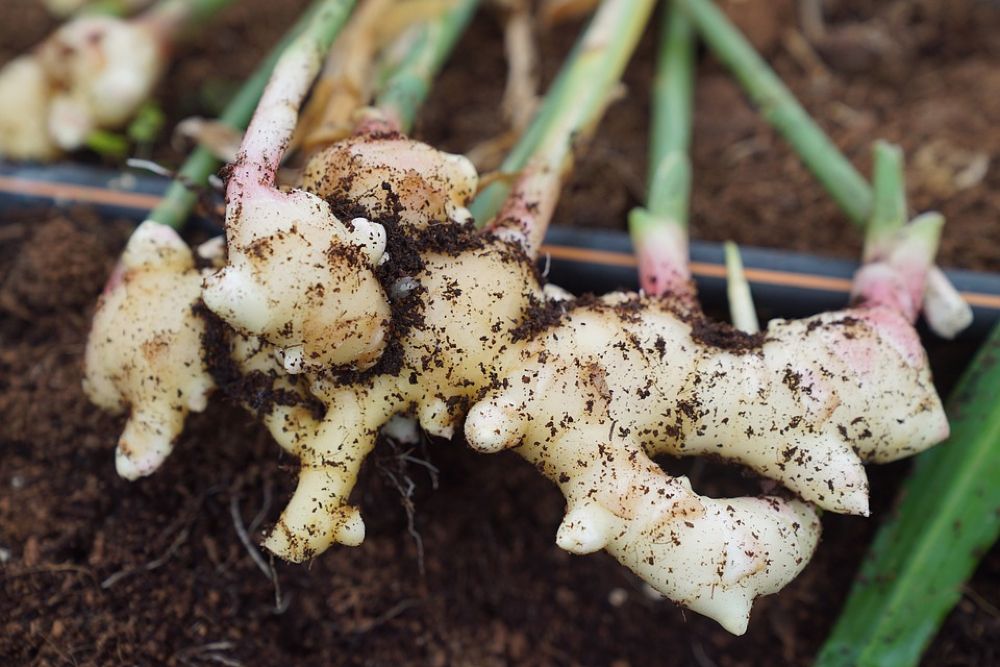Ginger is a common spice in households and is known for its medicinal properties. From curries to beverages or salad dressings, ginger is one of the main ingredients. Although you can find ginger in almost every market, growing it at home will give you an endless supply of this favored spice.
This guide includes everything about how to grow ginger in a pot at home.
What You’ll Need
Image credits: Cattlaya Art via Shutterstock
Ginger (Zingiber officinale) is a rhizome or, an underground stem that is capable of producing its roots and shoots. Here's what you'll need to grow ginger at home and grow your own supply of this flavorful root.
- A wide pot with drainage holes
- 4- to 6- inch long ginger rhizome
- Well-draining potting soil
- Fertilizer
- Watering can
- Scissors or pruners for harvesting
Step-by-Step Guide on How to Grow Ginger in a Pot
Now that you have all your supplies, it's time to get planting!
This herbaceous perennial is native to the humid, tropical forests of Southeast Asia so it's best to try and replicate it's original environment. Add this root to your indoor garden and you'll never go back to store bought varieties.
Step 1: Preparing the Ginger Rhizome
Image credits: Pixel Enforcer via Shutterstock
The best way to grow ginger at home is by planting an existing rhizome. Buy fresh, large, plump ginger rhizomes from your local garden center or grocery store. If you use ginger from your grocery store, opt for organic. If that's not possible, make sure to soak it in water overnight to remove any sprouting inhibitors.
Now, place the rhizome in the sun for a day to let it sprout. However, it might take more time than that -- Patience is a virtue here!
Once the ginger sprouts, cut it into two or three parts. Each part should be 2 to 3 inches long and must include two to three buds or eyes (the little bumps on the rhizome). Leave the pieces to heal and callous for one to two days so that your ginger is ready for planting!
Pro Tip: The more eyes your ginger has, the more sprouts you're likely to get.
Step 2: Soil and Pot
Image credits: Karolina Grabowska via Pexels
Ginger grows well in loamy, loose, and well-draining soil rich in organic matter with a pH between 5.5 to 6.5. Since the rhizome grows horizontally underground and its above-ground stem grows up to 3 feet, choose a pot that is at least 15 inches in diameter. The container must have drainage holes at the bottom to prevent waterlogging.
Place the sprouted rhizome horizontally in the pot with the eyes facing upwards. Completely cover the sides of the rhizome with soil, but leave the eyes visible.
Place the pot in a warm spot (68 to 77 degrees Fahrenheit) in your house to aid the growth of sprouts, preferably a north-facing window so it can receive indirect, bright light. Ginger cannot withstand cold temperatures, so if the temperature inside your house is cool (below 50 degrees Fahrenheit), use a heat mat to keep the plant warm. Temperatures below 50 degrees Fahrenheit can damage your plant.
Once the leaves start to appear and the temperature outside is warmer (at least 68 degrees Fahrenheit in the day and 50 degrees Fahrenheit at night), move the ginger pot outside for some fresh air and sunlight. Read more about it in step four!
Step 3: Water and Humidity
Image credits: Alexa via Pixabay
Water the ginger plant from the bottom every five to seven days until the shoot appears. After that, water the plant once the top 1-inch of the soil feels dry to the touch.
Ginger requires 40 to 50 percent humidity. So, if your house is dry, you can try misting your ginger plants regularly. Another trick is to place the ginger pot on a pebble tray filled with water in a way that the pot remains above the water level. As the water from the tray evaporates, it will increase humidity around the plant.
Note: Ginger cannot withstand complete dry-out. So water is regularly and keep the soil moist.
Step 4: Sunlight and Fertilization
Image credits: VH-studio via Shutterstock
As some leaves or green shoots appear out of the rhizome, place the ginger pot in a full to partial shade location. Ginger needs two to five hours of direct sunlight every day. However, when transitioning the ginger pot from indoors to outdoors, it is better to slowly introduce it to sunlight so that it does not damage the foliage.
Hence, once the shoot starts to appear, place the ginger pot outside in the morning sun for two hours. After two hours, move the pot to a shaded place. Morning sunlight is necessary as it is not as strong as afternoon sunlight. Slowly increase the direct sunlight period for the plant by up to five hours. This process will take seven to ten days.
Fertilization is also important for the growth of the ginger rhizome. When the ginger plant starts growing, add a water-soluble or granular fertilizer every month. Make sure you always read the instructions on the package as well.
Step 5: Harvesting
Image credits: SpencerWing via Pixabay
Growing ginger in a pot tests your patience as this plant takes at least eight to ten months to grow. Ginger shows that it is ready for harvest by shedding the foliage. So, when the plant has dried up or has turned yellow, it is time to harvest.
Dig up the plant and brush off the soil from the fresh ginger rhizome. Save a piece of the rhizome to plant again and use the rest of the ginger as you like. It is possible to store the ginger rhizome or its pieces in the freezer for up to six months or refrigerate the unpeeled ginger for up to three weeks.
Step 6: Protecting Your Ginger From Pests
Image credits: Bigc Studio via Shutterstock
Watch out for symptoms like yellow leaves, spider webs, sticky honeydew on leaves, or stippled leaves. These could be signs of pests like aphids, mealybugs, and spider mites on your ginger plant.
Prevent your plant from any kind of pests by using insecticidal soap or homemade pesticides like vinegar or neem oil spray.
Spice Things Up With Ginger!
Now that you know how to grow, protect, and harvest ginger in a pot, it's time to plant it at your home. Provide the plant with the right environment and watch your ginger rhizomes grow!
Have you ever grown ginger in a pot? Share your experience in the comments below.

